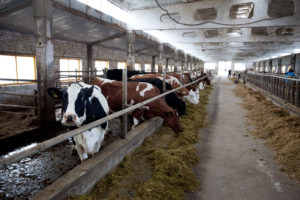Experts named the reason for the high cost of finished products

Deputy Chairman of the Moscow Chamber of Commerce and Industry Committee for Entrepreneurship Development in the Agro-Industrial Complex and General DIRECTOR of Petrova 5 Consulting Marina Petrova made a report “Forecast for the development of key commodity markets affecting the cost of the “Ready Food” category.” In the report, the expert points out that dependence on imports will remain a key factor influencing the increase in the cost of finished products.
Import dependence in the agricultural sector remains at a high level, the expert believes. Thus, in terms of equipment for production, this figure is about 60%, for livestock breeding - about 50%, for the agricultural machinery segment - 50%, for seeds - 37%, veterinary drugs - 55%, packaging - 40%, spare parts and components - 50% .
“As for seeds, for a number of crops the dependence on imports is much higher. 96% is SUGAR beets, almost 80% is corn. The dependence in terms of technology remains significant - about 70%. In this regard, the following situation arose. Agriculture has a certain inertia and for some period is able to move forward in a given direction even under sanctions pressure. However, at present, agricultural enterprises are faced with problems caused by a shortage of components and difficulties with making payments for imported components. These factors are superimposed on the cost of production of finished products. In addition, the key rate remains at a high level, which complicates the possibility of obtaining preferential loans at a low rate for agricultural enterprises,” the expert expressed her opinion.
As Marina Petrova reported, citing Rosstat data, on the dairy market at the end of December last year, MILK producer prices practically recovered to the level of January of the same year. The reduction in livestock numbers that occurred in the last quarter of 2023 remains an alarming factor in the dairy industry. Some agricultural producers have reduced their livestock due to increasing losses. In the drinking milk market, based on Rosstat data, we see stabilization of prices and demand for products. Production continues to increase in the butter segment, which is part of a global trend of increasing demand for milk fats.
Speaking about the vegetable oil market, it is worth noting that thanks to high harvests in 2022 and 2023, RUSSIA exported 4.3 million tons of sunflower oil in 2023, which is +31% higher than in 2022. The main buyers were CHINA , Turkey , and India.
Speaking about the situation in the poultry industry, Marina Petrova noted:
“Many enterprises use imported hatching eggs , because they show better hatchability of chickens and greater resistance of young animals to diseases. Russia also produces hatching eggs, which are cheaper than foreign ones. However, foreign products are considered to be of higher quality and are in great demand. So far, the country does not have vaccines for poultry against all diseases, which reduces the protection of the livestock. Essential vitamin supplements and premixes for chickens are rising in price comparable to the DOLLAR exchange rate.”
In general, as the expert points out, the more complex the product, the greater its dependence on raw materials along the entire chain: from feed and veterinary drugs to logistics for the shelf of the finished product. The further development of commodity markets will largely depend, among other things, on government price regulation and EXPORT bans .
Read together with it:
- В Раменском выведена новая порода кроликов — Великородская белаяЭто значимое событие обозначает первую отечественную породу, разработанную для племенного и промышленного производства за последние 60 лет. Глава Раменского муниципального округа Эдуард Малышев посетил институт, где директор, доктор биологических наук Глеб Косовский, провел ознакомительную экскурсию для почетных гостей. Институт служит научно-методической базой для разработки технологий в области ...


